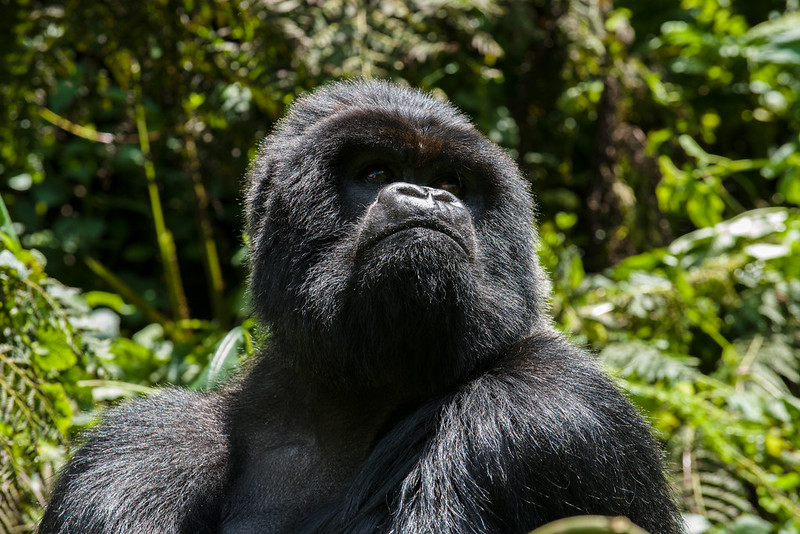
All About Mountain Gorillas of Africa
All About Mountain Gorillas of Africa
Of all the wild life interactions in the world, a chance to see mountain gorillas is the best. In Kahuzi Biega National Park, mountain gorillas and eastern lowland gorillas are subspecies of the eastern gorillas. Approximately 900 mountain gorillas remain in the world today, with half of them living in Uganda’s Mgahinga Gorilla National Park and Bwindi Impenetrable Forest National Park. Gorilla tours are also available in Rwanda’s Volcanoes National Park and the Democratic Republic of the Congo’s Virungas National Park. Among the distinctive traits that set mountain gorillas apart from other primates are:
Food and Drink
They mostly eat plants because they are herbivores. Fruits, leaves, wild celery, thistles, stinging nettles, bedstraw, and bamboo shoots are the primary foods consumed by mountain gorillas. Even though they are vegetarians, they occasionally catch little insects, ants, and larvae for food.
Live in gorilla groups or families.
Mountain gorillas live in many families, and each member of a particular family has a strong bond with that family. It’s fascinating to note that each gorilla returns to her or his own family after leaving, even if the two or three families cross paths and mix. A family is headed by a dominant silverback and has roughly 10–30 members. Only eight people are permitted to see a single gorilla family during the year.
When they reach sexual maturity, male mountain gorillas have silvery hair on their backs and capped muscles, giving them an aggressive appearance. Their arms are longer than their legs, and they have big, hairless heads with a glossy black muzzle, a robust trunk, and a wide chest.
As their name suggests, mountain gorillas are found in steep areas. The rare species trek to the primarily forested mountain summits. They can withstand the cold at higher elevations thanks to their thick fur.Therefore, gorilla trekking in Africa means traveling through a dense forest—an experience that every visitor will never forget.
Human illness susceptibility
Because they share 98% of human genes, mountain gorillas are extremely susceptible to human diseases. The most common ones are airborne, such as cough and flu, which can transfer from person to mountain gorilla. As a result, visitors are instructed to maintain a seven-meter gap between themselves and the gorillas. In virungas, for example, visitors are provided masks to wear over their mouth and nose when they cough and sneeze.
Because they can’t remain in one spot for two nights, mountain gorillas are mobile. Each family, under the leadership of a dominant silver back, departs the location where they slept each morning and relocates. The guards must keep an eye on the gorillas’ sleeping locations so that the trekkers can follow them the following morning because they construct new nests in the nighttime and will not return there the following night.
Procreation
Compared to other wild animals, mountain gorillas reproduce quite slowly. With a gestation period of 8.5 months, the female mountain gorilla gives birth to her first child at the age of 10. Twin births by mountain gorillas are not very common. A young gorilla weighs about 1.8 kg at birth, but it continues to grow until it reaches adulthood, weighing roughly 180 kg.
Thus, to sum up, mountain gorillas are incredibly fascinating creatures to engage with. The roles that each family member plays are similar to those of a genuine human family.
Where Can You See Africa’s Gorillas?
The mountain gorillas can be seen in Mount Mgahinga National Park, Volcanoes National Park, and Bwindi Impenetrable Forest National Park. You should expect to spend roughly three days on safari on a Uganda gorilla safari tour. Two days should be plenty in Rwanda. To experience the finest of East Africa, it’s crucial to include other safari spots in these states.


